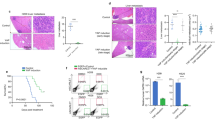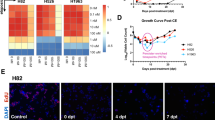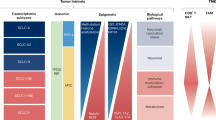Abstract
Small cell lung cancer (SCLC) is a recalcitrant malignancy with dismal prognosis due to rapid relapse after an initial treatment response. More effective treatments for SCLC are desperately needed. Our previous studies showed that cell migration-inducing hyaluronan binding protein (CEMIP) functionally promotes SCLC cell proliferation and metastasis. In this study, we investigated whether and how CEMIP regulates the chemosensitivity of SCLC. Through the GDSC database, we found that CEMIP expression levels were positively correlated with the IC50 values of several commonly used chemotherapeutic drugs in SCLC cells (cisplatin, gemcitabine, 5-fluorouracil and cyclophosphamide). We demonstrated that overexpression or knockdown of CEMIP in SCLC cells resulted in a notable increase or reduction in the IC50 value of cisplatin or etoposide, respectively. We further revealed that CEMIP functions as an adaptor protein in SCLC cells to interact with SRC and YAP through the 1-177 aa domain and 820-1361 aa domain, respectively, allowing the autophosphorylation of Y416 and activation of SRC, thus facilitating the interaction between YAP and activated SRC, and resulting in increased phosphorylation of Y357, protein stability, nuclear accumulation and transcriptional activation of YAP. Overexpressing SRC or YAP counteracted the CEMIP knockdown-mediated increase in the sensitivity of SCLC cells to cisplatin and etoposide. The combination of the SRC inhibitor dasatinib or the YAP inhibitor verteporfin and cisplatin/etoposide (EP regimen) displayed excellent synergistic antitumor effects on SCLC both in vitro and in vivo. This study demonstrated that targeted therapy against the CEMIP/SRC/YAP complex is a potential strategy for SCLC and provides a rationale for the development of future clinical trials with translational prospects.

This is a preview of subscription content, access via your institution
Access options
Subscribe to this journal
Receive 12 print issues and online access
$259.00 per year
only $21.58 per issue
Buy this article
- Purchase on SpringerLink
- Instant access to full article PDF
Prices may be subject to local taxes which are calculated during checkout








Similar content being viewed by others
References
Thai AA, Solomon BJ, Sequist LV, Gainor JF, Heist RS. Lung cancer. Lancet. 2021;398:535–54.
Herzog BH, Devarakonda S, Govindan R. Overcoming chemotherapy resistance in SCLC. J Thorac Oncol. 2021;16:2002–15.
Hua Q, Zhang B, Xu G, Wang L, Wang H, Lin Z, et al. CEMIP, a novel adaptor protein of OGT, promotes colorectal cancer metastasis through glutamine metabolic reprogramming via reciprocal regulation of β-catenin. Oncogene. 2021;40:6443–55.
Xu G, Zhao L, Hua Q, Wang L, Liu H, Lin Z, et al. CEMIP, acting as a scaffold protein for bridging GRAF1 and MIB1, promotes colorectal cancer metastasis via activating CDC42/MAPK pathway. Cell Death Dis. 2023;14:167.
Tang Z, Ding Y, Shen Q, Zhang C, Li J, Nazar M, et al. KIAA1199 promotes invasion and migration in non-small-cell lung cancer (NSCLC) via PI3K-Akt mediated EMT. J Mol Med. 2019;97:127–40.
Zhao L, Zhang D, Shen Q, Jin M, Lin Z, Ma H, et al. KIAA1199 promotes metastasis of colorectal cancer cells via microtubule destabilization regulated by a PP2A/stathmin pathway. Oncogene. 2019;38:935–49.
Xu Y, Xu H, Li M, Wu H, Guo Y, Chen J, et al. KIAA1199 promotes sorafenib tolerance and the metastasis of hepatocellular carcinoma by activating the EGF/EGFR-dependent epithelial-mesenchymal transition program. Cancer Lett. 2019;454:78–89.
Liu M, Xie L, Zhang Y, Chen J, Zhang X, Chen Y, et al. Inhibition of CEMIP potentiates the effect of sorafenib on metastatic hepatocellular carcinoma by reducing the stiffness of lung metastases. Cell Death Dis. 2023;14:25.
Li L, Shen X, Mo X, Chen Z, Yu F, Mo X, et al. CEMIP-mediated hyaluronan metabolism facilitates SCLC metastasis by activating TLR2/c-Src/ERK1/2 axis. Biochim Biophys Acta Mol Cell Res. 2023;1870:119451.
Mo X, Shen X, Mo X, Yu F, Tan W, Deng Z, et al. CEMIP promotes small cell lung cancer proliferation by activation of glutamine metabolism via FBXW7/c-Myc-dependent axis. Biochem Pharmacol. 2023;209:115446.
Mayer EL, Krop IE. Advances in targeting SRC in the treatment of breast cancer and other solid malignancies. Clin Cancer Res. 2010;16:3526–32.
Zhu SW, Ye M, Ma X, Wu ZZ, Wan SC, Yang SC, et al. pH-responsive nanoprodrugs combining a Src inhibitor and chemotherapy to potentiate antitumor immunity via pyroptosis in head and neck cancer. Acta Biomater. 2022;154:497–509.
Roelle S, Grosse R, Buech T, Chubanov V, Gudermann T. Essential role of Pyk2 and Src kinase activation in neuropeptide-induced proliferation of small cell lung cancer cells. Oncogene. 2008;27:1737–48.
Roskoski R Jr. Src protein-tyrosine kinase structure, mechanism, and small molecule inhibitors. Pharmacol Res. 2015;94:9–25.
Wu BK, Mei SC, Chen EH, Zheng Y, Pan D. YAP induces an oncogenic transcriptional program through TET1-mediated epigenetic remodeling in liver growth and tumorigenesis. Nat Genet. 2022;54:1202–13.
Wang J, Ma L, Weng W, Qiao Y, Zhang Y, He J, et al. Mutual interaction between YAP and CREB promotes tumorigenesis in liver cancer. Hepatology. 2013;58:1011–20.
Chen X, Zhang X, Jiang Y, Zhang X, Liu M, Wang S, et al. YAP1 activation promotes epithelial-mesenchymal transition and cell survival of renal cell carcinoma cells under shear stress. Carcinogenesis. 2022;43:301–10.
Liu M, Zhang Y, Yang J, Zhan H, Zhou Z, Jiang Y, et al. Zinc-dependent regulation of ZEB1 and YAP1 coactivation promotes epithelial-mesenchymal transition plasticity and metastasis in pancreatic cancer. Gastroenterology. 2021;160:1771–.e1771.
Ma H, Wang J, Zhao X, Wu T, Huang Z, Chen D, et al. Periostin promotes colorectal tumorigenesis through integrin-FAK-Src pathway-mediated YAP/TAZ activation. Cell Rep. 2020;30:793–806.e796.
Lamar JM, Xiao Y, Norton E, Jiang ZG, Gerhard GM, Kooner S, et al. SRC tyrosine kinase activates the YAP/TAZ axis and thereby drives tumor growth and metastasis. J Biol Chem. 2019;294:2302–17.
Maruoka T, Kitanaka A, Kubota Y, Yamaoka G, Kameda T, Imataki O, et al. Lemongrass essential oil and citral inhibit Src/Stat3 activity and suppress the proliferation/survival of small-cell lung cancer cells, alone or in combination with chemotherapeutic agents. Int J Oncol. 2018;52:1738–48.
Ueda Y, Igishi T, Hashimoto K, Suyama H, Araki K, Sumikawa T, et al. Synergistic cell growth inhibition by the combination of amrubicin and Akt-suppressing tyrosine kinase inhibitors in small cell lung cancer cells: implication of c-Src and its inhibitor. Int J Oncol. 2009;34:689–96.
Yang H, Sun B, Xu K, He Y, Zhang T, Hall SRR, et al. Pharmaco-transcriptomic correlation analysis reveals novel responsive signatures to HDAC inhibitors and identifies Dasatinib as a synergistic interactor in small-cell lung cancer. EBioMedicine. 2021;69:103457.
Wu Q, Guo J, Liu Y, Zheng Q, Li X, Wu C, et al. YAP drives fate conversion and chemoresistance of small cell lung cancer. Sci Adv. 2021;7:eabg1850.
Song Y, Sun Y, Lei Y, Yang K, Tang R. YAP1 promotes multidrug resistance of small cell lung cancer by CD74-related signaling pathways. Cancer Med. 2020;9:259–68.
Yang W, Soares J, Greninger P, Edelman EJ, Lightfoot H, Forbes S, et al. Genomics of drug sensitivity in cancer (GDSC): a resource for therapeutic biomarker discovery in cancer cells. Nucleic Acids Res. 2013;41:D955–961.
Goldman MJ, Craft B, Hastie M, Repečka K, McDade F, Kamath A, et al. Visualizing and interpreting cancer genomics data via the Xena platform. Nat Biotechnol. 2020;38:675–8.
Matsuo K, Purushotham S, Jiang B, Mandelbaum RS, Takiuchi T, Liu Y, et al. Survival outcome prediction in cervical cancer: Cox models vs deep-learning model. Am J Obstet Gynecol. 2019;220:381.e381–381.e314.
Li L, Pan Y, Mo X, Wei T, Song J, Luo M, et al. A novel metastatic promoter CEMIP and its downstream molecular targets and signaling pathway of cellular migration and invasion in SCLC cells based on proteome analysis. J Cancer Res Clin Oncol. 2020;146:2519–34.
Tice RR, Agurell E, Anderson D, Burlinson B, Hartmann A, Kobayashi H, et al. Single cell gel/comet assay: guidelines for in vitro and in vivo genetic toxicology testing. Environ Mol Mutagen. 2000;35:206–21.
Murai J, Thomas A, Miettinen M, Pommier Y. Schlafen 11 (SLFN11), a restriction factor for replicative stress induced by DNA-targeting anti-cancer therapies. Pharmacol Ther. 2019;201:94–102.
Celeste A, Fernandez-Capetillo O, Kruhlak MJ, Pilch DR, Staudt DW, Lee A, et al. Histone H2AX phosphorylation is dispensable for the initial recognition of DNA breaks. Nat Cell Biol. 2003;5:675–9.
Guo YX, Lin ZM, Wang MJ, Dong YW, Niu HM, Young CY, et al. Jungermannenone A and B induce ROS- and cell cycle-dependent apoptosis in prostate cancer cells in vitro. Acta Pharmacol Sin. 2016;37:814–24.
Debaugnies M, Rodríguez-Acebes S, Blondeau J, Parent MA, Zocco M, Song Y, et al. RHOJ controls EMT-associated resistance to chemotherapy. Nature. 2023;616:168–75.
Liu JH, Yang HL, Deng ST, Hu Z, Chen WF, Yan WW, et al. The small molecule chemical compound cinobufotalin attenuates resistance to DDP by inducing ENKUR expression to suppress MYH9-mediated c-Myc deubiquitination in lung adenocarcinoma. Acta Pharmacol Sin. 2022;43:2687–95.
Saito H, Tenjin Y, Yamada T, Kudoh S, Kudo N, Sanada M, et al. The role of YAP1 in small cell lung cancer. Hum Cell. 2022;35:628–38.
Yan F, Qian M, He Q, Zhu H, Yang B. The posttranslational modifications of Hippo-YAP pathway in cancer. Biochim Biophys Acta Gen Subj. 2020;1864:129397.
Totaro A, Panciera T, Piccolo S. YAP/TAZ upstream signals and downstream responses. Nat Cell Biol. 2018;20:888–99.
Weng J, Zhang Y, Liang W, Xie Y, Wang K, Xu Q, et al. Downregulation of CEMIP enhances radiosensitivity by promoting DNA damage and apoptosis in colorectal cancer. Med Oncol. 2023;40:73.
Irby RB, Yeatman TJ. Role of Src expression and activation in human cancer. Oncogene. 2000;19:5636–42.
Zhang X, Xu H, Bi X, Hou G, Liu A, Zhao Y, et al. Src acts as the target of matrine to inhibit the proliferation of cancer cells by regulating phosphorylation signaling pathways. Cell Death Dis. 2021;12:931.
Dubois F, Keller M, Hoflack J, Maille E, Antoine M, Westeel V, et al. Role of the YAP-1 transcriptional target cIAP2 in the differential susceptibility to chemotherapy of non-small-cell lung cancer (NSCLC) patients with tumor RASSF1A gene methylation from the phase 3 IFCT-0002 trial. Cancers. 2019;11:1835.
Li P, Silvis MR, Honaker Y, Lien WH, Arron ST, Vasioukhin V. αE-catenin inhibits a Src-YAP1 oncogenic module that couples tyrosine kinases and the effector of Hippo signaling pathway. Genes Dev. 2016;30:798–811.
Sugihara T, Werneburg NW, Hernandez MC, Yang L, Kabashima A, Hirsova P, et al. YAP tyrosine phosphorylation and nuclear localization in cholangiocarcinoma cells are regulated by LCK and independent of LATS activity. Mol Cancer Res. 2018;16:1556–67.
Huang C, Yuan W, Lai C, Zhong S, Yang C, Wang R, et al. EphA2-to-YAP pathway drives gastric cancer growth and therapy resistance. Int J Cancer. 2020;146:1937–49.
Zhao B, Li L, Tumaneng K, Wang CY, Guan KL. A coordinated phosphorylation by Lats and CK1 regulates YAP stability through SCF(beta-TRCP). Genes Dev. 2010;24:72–85.
Mo JS, Meng Z, Kim YC, Park HW, Hansen CG, Kim S, et al. Cellular energy stress induces AMPK-mediated regulation of YAP and the Hippo pathway. Nat Cell Biol. 2015;17:500–10.
Spataro S, Guerra C, Cavalli A, Sgrignani J, Sleeman J, Poulain L et al. CEMIP (HYBID, KIAA1199): structure, function and expression in health and disease. FEBS J. 2022; 290:3946–62.
Zhang W, Yin G, Zhao H, Ling H, Xie Z, Xiao C, et al. Secreted KIAA1199 promotes the progression of rheumatoid arthritis by mediating hyaluronic acid degradation in an ANXA1-dependent manner. Cell Death Dis. 2021;12:102.
Shostak K, Zhang X, Hubert P, Göktuna SI, Jiang Z, Klevernic I, et al. NF-κB-induced KIAA1199 promotes survival through EGFR signalling. Nat Commun. 2014;5:5232.
Sen T, Della Corte CM, Milutinovic S, Cardnell RJ, Diao L, Ramkumar K, et al. Combination treatment of the oral CHK1 inhibitor, SRA737, and low-dose gemcitabine enhances the effect of programmed death ligand 1 blockade by modulating the immune microenvironment in SCLC. J Thorac Oncol. 2019;14:2152–63.
Redin E, Garrido-Martin EM, Valencia K, Redrado M, Solorzano JL, Carias R, et al. YES1 is a druggable oncogenic target in SCLC. J Thorac Oncol. 2022;17:1387–403.
Liu-Chittenden Y, Huang B, Shim JS, Chen Q, Lee SJ, Anders RA, et al. Genetic and pharmacological disruption of the TEAD-YAP complex suppresses the oncogenic activity of YAP. Genes Dev. 2012;26:1300–5.
Yamazoe M, Ozasa H, Tsuji T, Funazo T, Yoshida H, Hashimoto K, et al. Yes-associated protein 1 mediates initial cell survival during lorlatinib treatment through AKT signaling in ROS1-rearranged lung cancer. Cancer Sci. 2023;114:546–60.
Cho K, Ro SW, Lee HW, Moon H, Han S, Kim HR, et al. YAP/TAZ suppress drug penetration into hepatocellular carcinoma through stromal activation. Hepatology. 2021;74:2605–21.
Acknowledgements
The research was supported by National Natural Science Foundation of China (82374093), Joint Project on Regional High-Incidence Diseases Research of Guangxi Natural Science Foundation under Grant No. 2023GXNSFDA026026, National Natural Science Foundation of China (82160698), Joint Project on Regional High-Incidence Diseases Research of Guangxi Natural Science Foundation under Grant No. 2024GXNSFBA010027, Guangxi Natural Science Foundation (No. 2022GXNSFBA035652). The Science and Technology Planning Project of Nanning Qingxiu District (No: 2021013), the Guangxi Medical University Training Program for Distinguished Young Scholars, and the Guangxi First-class Discipline Project for Pharmaceutical Sciences (No. GXFCDP-PS-2018). We thank the research team of Prof. Hua-xin Hou and Prof. Dan-rong Li, who provided countless years of help during the experimental process.
Author information
Authors and Affiliations
Contributions
XJS performed the major experiments and interpreted the data. HLW and XCM were responsible for establishing the in vivo model. XYW and JCH performed the in vivo sample collection and verification experiments. LL and XXM assisted in some of the experiments. LL and XCM collected the clinical samples. XJQ, ZQC, SPX and ZL provided technical support for some of the experiments. ZL, ZQC and JY revised the manuscript. JY supervised the entire study and designed the study.
Corresponding authors
Ethics declarations
Competing interests
The authors declare no competing interests.
Rights and permissions
Springer Nature or its licensor (e.g. a society or other partner) holds exclusive rights to this article under a publishing agreement with the author(s) or other rightsholder(s); author self-archiving of the accepted manuscript version of this article is solely governed by the terms of such publishing agreement and applicable law.
About this article
Cite this article
Shen, Xj., Wei, Hl., Mo, Xc. et al. Adaptor protein CEMIP reduces the chemosensitivity of small cell lung cancer via activation of an SRC-YAP oncogenic module. Acta Pharmacol Sin 45, 2657–2671 (2024). https://doi.org/10.1038/s41401-024-01342-4
Received:
Revised:
Accepted:
Published:
Issue date:
DOI: https://doi.org/10.1038/s41401-024-01342-4



